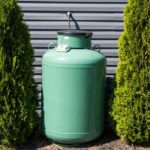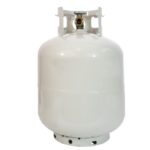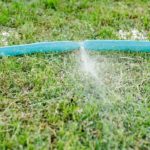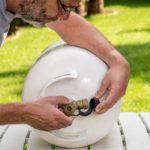You may have noticed that frost tends to form on the outside of your propane tank as the temperature drops in the fall and winter. Have you ever wondered why that happens? And, perhaps more importantly, is it safe?
When you open the tank valve, the liquid propane draws heat from the walls of the tank, causing it to boil and then vaporize. This makes the walls of the tank cold and this, combined with the outside humidity, causes the frost to form. The frost is not considered dangerous.
While frosting isn’t considered dangerous, there are a few things to keep in mind in order to stay safe and get the most out of your propane tanks. Let’s take a look at why frost tends to form on propane tanks.
Is It Normal for Propane Tanks to Frost Up?
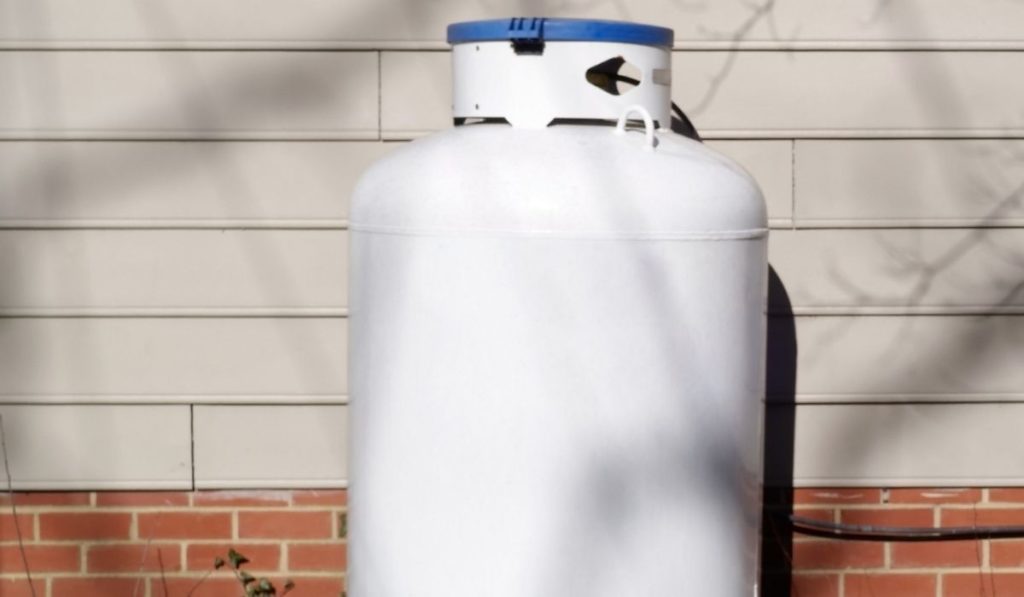
To fully understand why the outside of your propane tank freezes up, we’ll need to go a little bit of deeper into the science behind it.
However, in simple terms, the propane contracts once temperatures drop. This means that the colder the weather, the slower the propane will flow. The change in the rate of pressure causes the tank to freeze up. Now let’s go a bit further.
Propane is also known as liquid petroleum gas, which hints at the fact that before propane is a vapor or gas, it’s in a liquid state. While water boils at about 212˚F and tends to freeze at 32˚F, propane boils at -44˚ F. At that point, it can turn into gas from a liquid.
The propane is under pressure when inside the tank, and this constant pressure prevents the propane from boiling. However, the second you open the valve to use the propane, the pressure drops, and this causes the liquid to reach boiling point and hence vaporize.
While the propane turns into vapor, it also draws in heat from its surroundings. This heat is transferred through the tank and makes the metal cold.
Next up, the humidity in the air outside condenses and then freezes the cold surface of the metal. This process ends up making the frost we see. You may have noticed that the frost only lines up where the liquid is inside the tank. This is because of the process that is taking place within.
Here’s another way to look at it: When it comes to rising and falling, pressure and temperature rise and fall at the same time. The faster the vapor escapes from the tank, the faster the pressure drops. This creates the drop in temperature discussed earlier and then forms the frost.
To keep the pressure up, it’s ideal to keep the tank filled and warm, such as with a heating blanket like this one from Powerblanket (on Amazon). These measures help remove the pressure and temperature issues, specifically when the weather is very cold.
Is Frost on Propane Tanks Dangerous?
Once you’ve understood how the frosting on propane tanks form, the only natural follow up question is whether it’s dangerous or not. There are a few factors to consider when looking into the safety of the tank, and if the frost itself can be dangerous.
Frosting on a propane tank is not considered dangerous. With that said however, it’s something you should be careful about.
One of the issues regarding the safety of frost is how fast the propane is leaving the tank. If it’s leaving it too rapidly, this causes a drop in the internal temperature of the tank. Here are a couple of other things to keep in mind when dealing with your propane tank:
Tank Design: The frost can also build up if the propane tank is overfilled or in a position that it’s not designed to be in. The most common design for propane tanks is the upright position. They should also be transported in the same position to avoid any danger.
The tank is designed with the best position for the liquid natural gas in mind, which is why those instructions should always be followed.
Safety training: Propane tanks that are manufactured after April 1, 2020 have a valve that prevents the tank from overfilling. Moreover, every tank also has a certification for safety, and they are stamped with a date code. This date code confirms the manufacturing date of the tank.
To stay safe, make sure the tanks are only being used and refilled as long as they are not expired. While most propane tanks are good to be used anywhere from 10 to 12 years, it’s still a good idea to check the date of manufacture and expiry.
You can also have a tank recertified; this means you can then continue to use it after the initial expiration date. Typically, recertified tanks last 5 to 7 years; however, in some cases they can even last up to 12 years.
So as long as you follow the instructions mentioned on the tank, and keep an eye on its expiration date, it should be fine to use a propane tank with frost on it.

